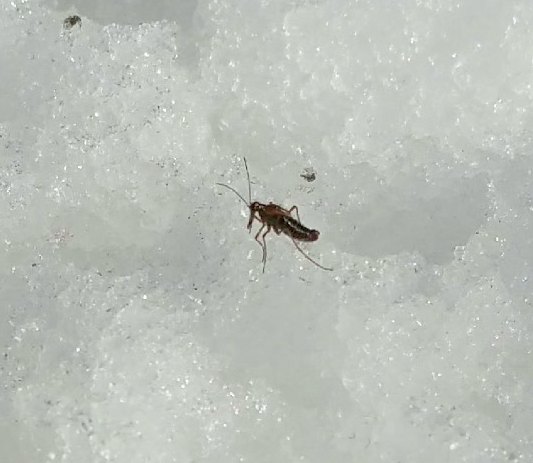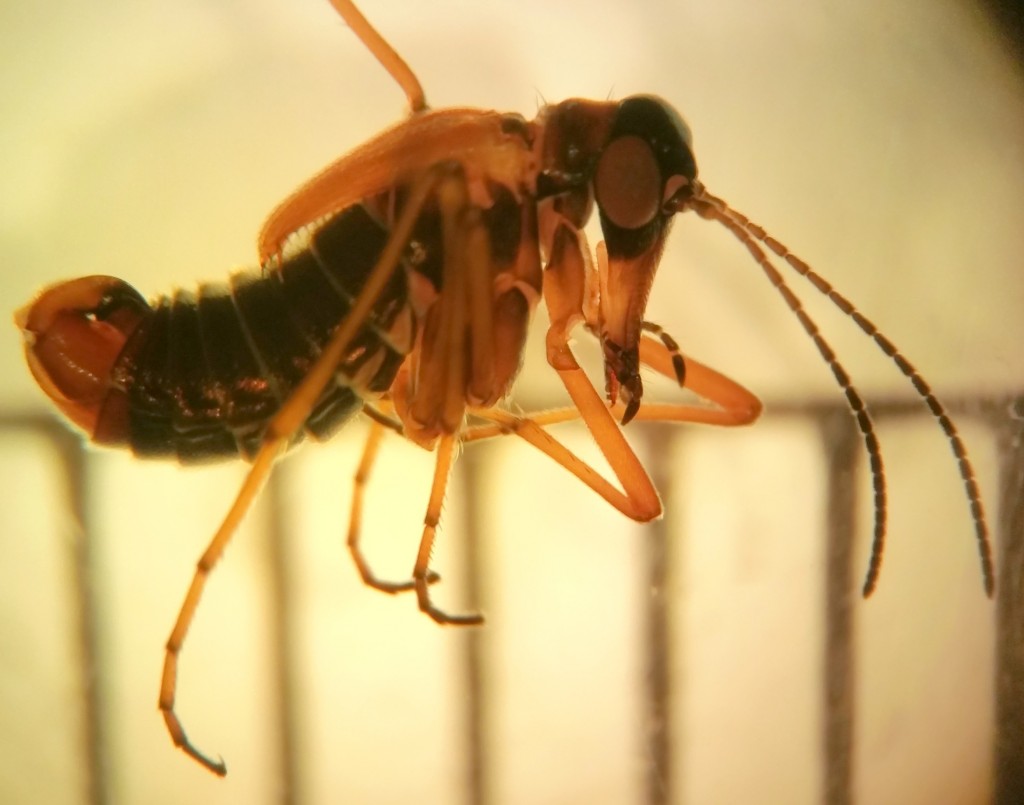Professor Janet Mihuc:
I knew that these insects occurred in our area but I had never set out to find one. Since it was a warm day and I was going on a walk in the woods with a friend, I decided to look for one (I actually found two, in two hours of searching). They are flightless insects that seek mates during this time of year. Thus they are one of the few insects that are active right now in our area. From what I have read, they feed on mosses and liverworts. They are about 5mm long so it takes some effort to find one. I had read that you should look for them moving across the snow from one mossy area to another, so that is what I did. They exhibit a strange jumping behavior and also play dead when touched. When playing dead, they draw their legs up and basically look like a short hemlock needle. The one in my photo is a male. You can tell because it has vestigial wing structures, which the females lack. The individuals pictured are both males of the less common species found in the northeastern U.S., Boreus nivoriundus. They are considered to be widely distributed across Canada, but in the eastern U.S. they only extend as far south as Virginia and Tennessee. As you can imagine, exact abundance and density information is unknown. Evidently, there are only two species in the northeast and they are fairly easy to tell apart. In trying to figure out where they have been reported in the northeast, I looked at the photos on bugguide.net and the reports on iNaturalist. On both bugguide and iNaturalist the closest other report was in St. Albans, VT. For iNaturalist, there have been no sightings of these insects submitted for the state of New York.



so cool!